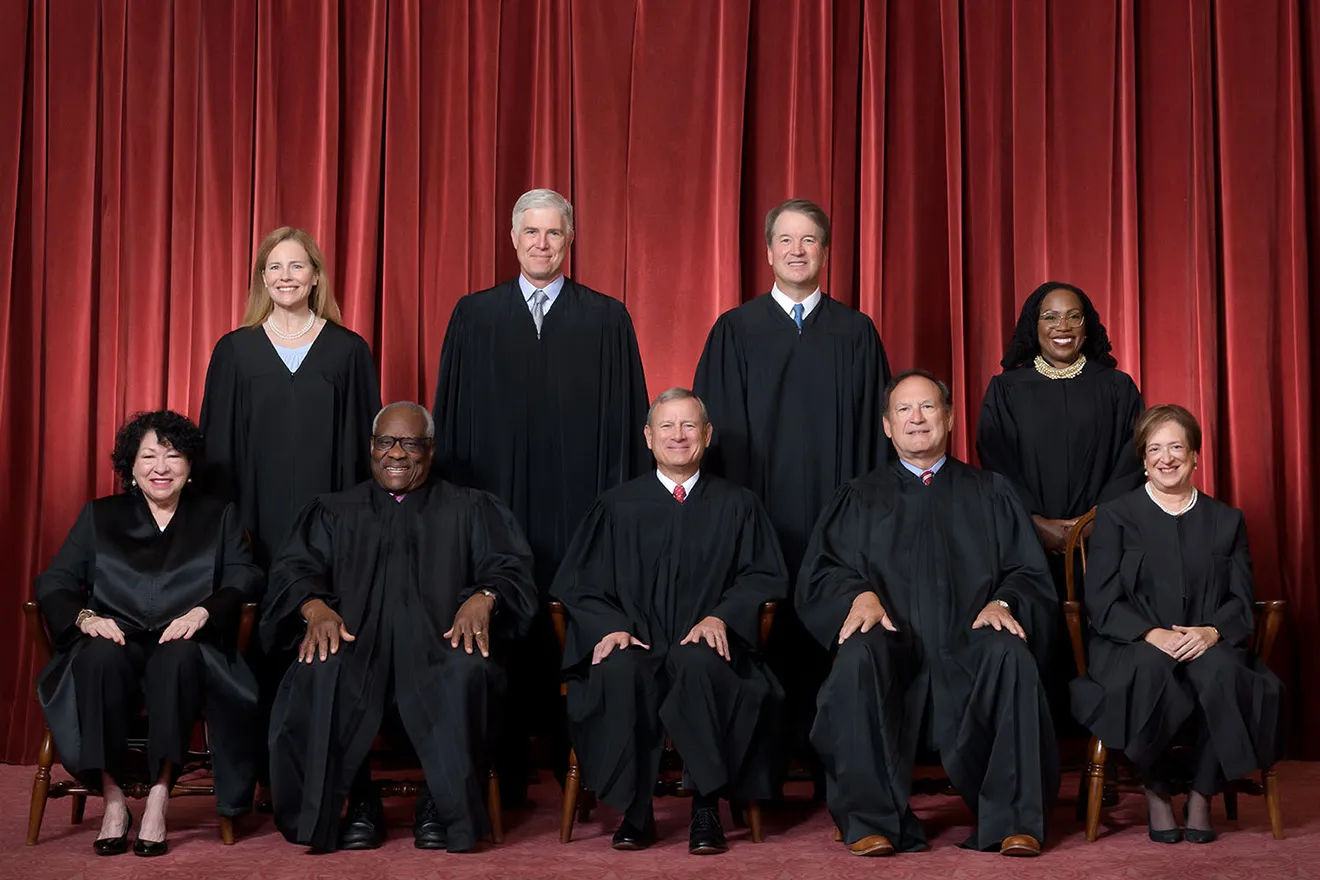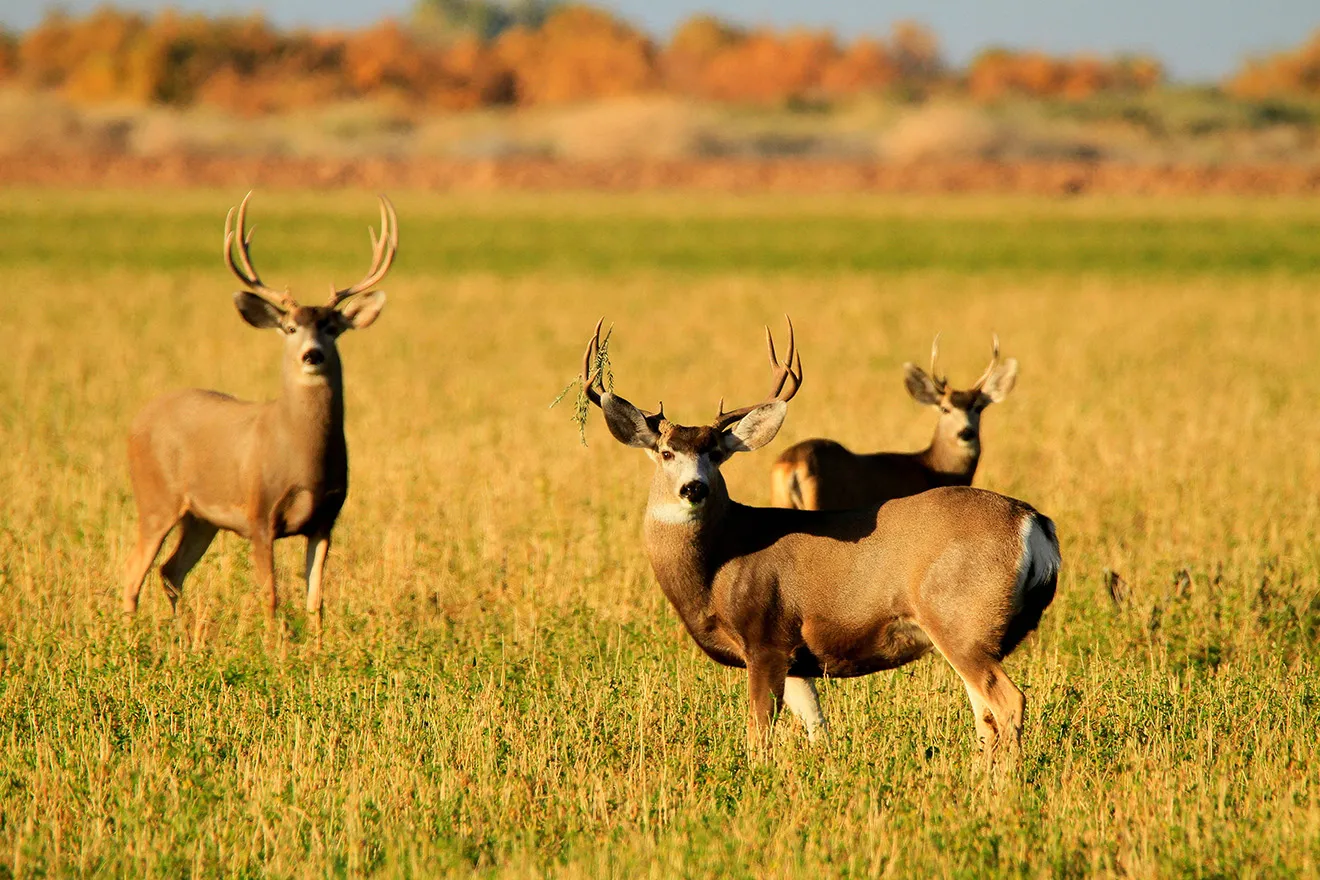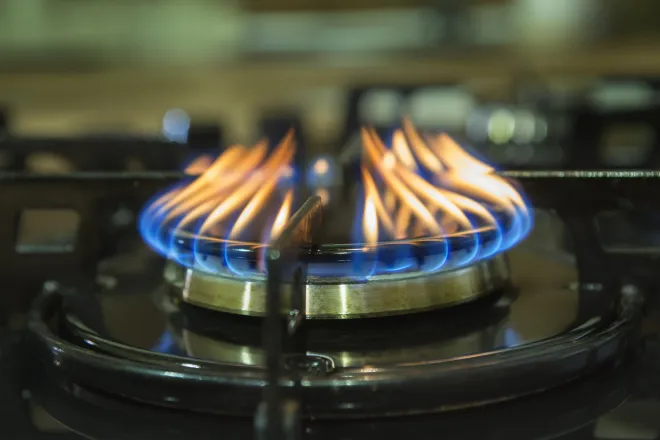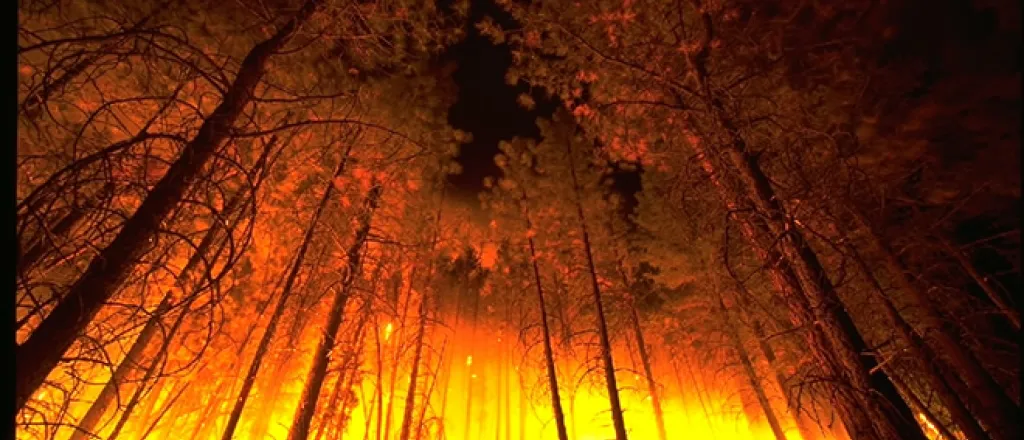
Longer wildfire seasons having impact on mental health in rural America
Click play to listen to a summary of this article.
(Oregon News Service) Will and Julie Volpert have led white water rafting trips on Southern Oregon’s Rogue and Klamath rivers for over a decade for their company Indigo Creek Outfitters, out of the small town of Talent, Oregon. The rafting season, which extends from May to September, is a perfect time to be out on the river where snowpack-fed cold water provides respite from the region’s hot summer.
Or it would be perfect if wildfire smoke weren’t a looming concern.
“We’ve been in operation here since 2011, and almost every year there’s some smoke that comes in and is noticeable on our trips,” Will Volpert said in an interview. If people have flexibility, he recommends that they schedule a trip before the third week of July when the likelihood of smoke in the air is lower.
Customers frequently cancel in late July and August because of the smoke, especially for day-trips. Federal data shows air quality tends to be more than four times worse on average in Jackson County, Oregon, during this period than earlier in the summer.

“We’ve gotten very used to saying, ‘Hey, it’s very likely going to be smoky on your trip. It might not be, but it could be.’” Volpert said. But as long as they’re not putting their participants at risk, Volpert said, they won’t cancel a rafting trip because of wildfire smoke.
Running a business affected by wildfire smoke has become normal for the Volperts, but it hasn’t come without its personal toll.
“I used to get very stressed out and paralyzed with the idea of losing our summer, which for us is, as the owners of this small business, our livelihood,” Volpert said.
While Volpert says he’s learned to manage that anxiety, wildfire smoke is a frequent source of stress for many people living in rural communities. The smoke harms farms and recreation-based businesses, can be psychologically triggering for wildfire survivors, frequently drives residents indoors, and recent research showed it’s associated with increases in rural suicides.
Wildfire smoke has become a pervasive form of air pollution released from intensifying fires due to the warming effects of heat-trapping pollution and a litany of other environmental changes.
Southwestern Oregon experienced unhealthy air from wildfire smoke nearly 13 days each year on average from 2013 through the end of 2022 — up from one to two days on average from 1985 through 2012, according to a report by Oregon’s Department of Environmental Quality that used data from the town of Medford, about 10 miles northwest of Talent where Indigo Creek Outfitters is based.
Smoke pollution exacerbates asthma, worsens infections and contributes to a variety of other physical maladies. Tiny smoke particles move from lungs into bloodstreams and can directly affect brain health, with research out of the University of Montana connecting smoke exposure to the development of dementia.
Its noxious effects on mental health, particularly on rural communities, tend to receive less discussion.
Hidden Dangers in Rural Valleys
Southern Oregon’s Rogue Valley is at the heart of a region synonymous with white water rafting, rock climbing, and other outdoor activities in the Klamath Mountains and Cascade Range. Vineyards and pear orchards dot the valley, and in the mid-size town of Ashland at the valley’s south end, the annual Oregon Shakespeare Festival boasts international recognition.
All these activities hinge on good summer weather, and during the past decade, they’ve been disrupted by wildfire smoke, directly affecting wages, profits and reducing overall quality of life.
“In rural areas there’s likely more people whose livelihoods are based on the land and working outside,” said Colleen Reid, a health geographer and environmental epidemiologist at the University of Colorado in Boulder who studies the health effects of wildfire smoke.
In the valley, wildfire smoke settles more easily and often sticks around longer than it does in the surrounding mountains and plains. Atmospheric conditions often arise in valleys that keep smoke close to the ground, where its effect is the strongest. This can trigger more than physical ailments like asthma.
“We’re increasingly seeing mental health impacts,” Reid said. While early research focused on the effects of flames from wildfires, she said “there are some more recent studies where even individuals who were just affected by the smoke could have mental health impacts.”

By trapping people inside homes and forcing the cancellation of outdoor social events like youth sports, smoke can contribute to loneliness, domestic quibbling and despair.
A study published last fall in the science journal Proceedings of the National Academy of Sciences linked smoke exposure with increases in suicides among rural populations, though not among urban ones.
“In rural areas, we find that smoke days are significantly associated with increases in suicide rates,” said David Molitor, a health economist at the University of Illinois at Urbana-Champaign who led the research, which drew on 13 years of smoke and federal suicide data to track mental health effects.
Because deaths from suicide are tracked by the federal government, they can be a useful measurement reflecting mental health, which is otherwise difficult to research and track. And that federal data shows that rural Americans are about a third more likely to die from suicide than those living in cities or suburbs.
“I think what’s different with rural people is they have access to guns, and they’re much more effective at succeeding in their efforts,” said Joseph Schroeder, a disaster response veteran and former mental health extension specialist at the University of Kentucky with experience working at and running crisis hotlines for farmers and other rural residents.
Suicide ideation often arises from desperate needs for financial aid and other help, more so than poor mental health. This puts residents of rural communities that have been hollowed out following closures of timber, manufacturing and other employment-rich industries at greater risk.
“From my experience, the despair that has become suicidal ideation, or a suicidal threat, they’ve all come from conversations I’ve had with people who are calling me to get out of a situational problem — mostly financial,” Schroeder said. “It’s a poverty problem and it’s an isolation problem. And that looks differently in rural communities than it does in urban communities.”
The Almeda Fire
Come smoke or shine, Indigo Creek Outfitters – Volpert’s white water rafting company in Talent – always operates.
But on the morning of September 8, 2020, Volpert knew something was different about the wind whipping through the trees around his house outside of Phoenix, just three miles from Talent. The weather was so unusual he canceled the Upper Klamath rafting trip planned for that day.
“That is literally the only time that I can remember ever pulling the plug on one of our trips,” Volpert said. A few hours after making that decision, Talent and Phoenix were engulfed in flames.
The wildfire, known as the Almeda Fire, was the most destructive in Oregon history: About 3,000 buildings burned, most of them homes. Three people and many more animals died.
Analysis of weather station data shows the Almeda Fire broke out during a bout of fire weather — when conditions are persistently dry, warm and windy. The area was in extreme drought at the time, setting up conditions conducive for an extreme wildfire once winds strengthened. It took more than a week for firefighters to extinguish the flames completely.
After surviving a wildfire that completely changed the lives of so many in the Rogue Valley, there’s an added layer of grief that comes with the smoke season.
“For me, [smoke] causes a lot of anxiety,” said Jocksana Corona. The mobile home in Talent where she lived with her husband and two children burned down during the Almeda Fire. The family relocated to a suburban neighborhood in nearby Central Point, but haven’t been able to rebuild the kinds of strong community ties they had enjoyed in Talent.

© iStock - Toa55
“My kids grew up in the Latino community [in Talent] where there were always kids on their bikes, people on the streets walking their dogs,” Corona said. “In our new community and our new neighborhood, we don’t have that. It’s like we don’t know anybody.”
Even though Corona and her family were able to buy a house after losing their mobile home, she said three years later they’re still not fully recovered.
“We’re listed [by the state of Oregon] as a recovered family because we purchased the house and relocated,” Corona said. “But for me, for my own mental health and for my kids’ mental health, I wouldn’t say we’re recovered. I’m still experiencing triggers from the fire.”
Corona said she is bothered by the smoke in the air much more after her experience with the Almeda Fire, especially around its September anniversary.
Smoke is a constant reminder for wildfire survivors of their own harrowing experiences, and the potential for it to happen again.
“That grieving and that mourning is re-triggered by smoke season because it’s evident in the very air we breathe that their experience is not only real, but it hasn’t ended,” said Tucker Teutsch, executive director of Firebrand Resiliency Collective, a nonprofit created to support the area’s recovery from the Almeda Fire.
The nonprofit runs a peer support group that provides a safe grief space for Almeda Fire survivors to share recovery resources and talk through problems they’re having in the fire’s aftermath. The group has met weekly since the 2020 fire.
When Clean Air Is Impossible to Find
In the Methow Valley, a rural region in north-central Washington state, a coalition of community members has been supporting each other during smoke seasons since the 2013 Carlton Complex Fire, which destroyed 500 buildings.
The community coalition, called Clean Air Methow, spreads awareness about air quality safety. It also supports people struggling with the mental health toll of living with smoke.
“With this mental health and wellness piece, what we often don’t explicitly acknowledge is the threat of what the oppressive, opaque, physical heaviness of being under this white smoke for a prolonged period of time is like,” said Elizabeth Walker, director of Clean Air Methow.
“People kind of just say, ‘oh, it’s so bad, so smoky, I hate it,’” Walker said. “But when we ask people to actually give the words of their experience, they use ‘oppressive, heavy.’ They feel depressed.”
The number one clean air recommendation is for people to stay indoors, but this can contribute to feelings of social isolation when it’s smoky, according to Walker. Indoor air isn’t always cleaner than outdoor air, either. Older homes without modern windows, doors, ventilation and air conditioners can let in lots of smoke particles.
“Make sure you’re indoors, but also make sure you’re indoors with a HEPA filter or an air filtration system,” said Erin Landguth, a University of Montana at Missoula scientist who researches the health effects of wildfire smoke exposure. Because buying and maintaining such systems are expensive, a “key difference” from cities is that rural residents may be less able to afford them.
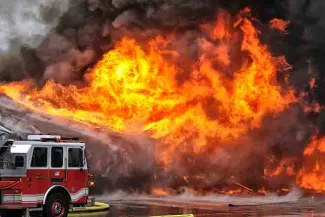
© iStock - Glenn_Hewitt
Clean Air Methow has been advocating for “cleaner air shelters” in the Methow Valley to provide public spaces with better indoor air quality for community members to visit when it’s smoky out. They’ve also provided air purifiers to people living in homes that let lots of smoke in.
Poor indoor air quality affects countless rural communities.
At Southern Oregon University in Ashland, access to clean indoor air during smoke season is hard to come by. The college’s older buildings don’t have updated indoor ventilation, causing workers and students there to be exposed to toxic smoke particles.
“I’m lucky enough that the building I work in was built in, I think 2016 or something like that, and it has a great HVAC system,” said Willie Long, assistant director at the outdoor program and climbing center at Southern Oregon University. “I generally have pretty good air quality when I get to go to work, but it’s not like that for most people who work at SOU.”
And when it’s smoky, colleges stay open. Southern Oregon University issued a policy in 2019 that states it will postpone all non-emergency strenuous activity, review filtration, and HVAC systems, and “encourage the use of N95 filtration masks or equivalent for personnel outdoors” when air quality exceeds the rate deemed by the U.S. Environmental Protection Agency as hazardous for everyone.
Trauma and Anxiety
Heidi Honegger Rogers spent 25 years working as a family nurse practitioner before shifting her focus as an academic at the University of New Mexico researching the health impacts of weather disasters and environmental change. She’s an active member with the Alliance of Nurses for Healthy Environments. “Wildfire is a really intense and often traumatizing experience,” she said.
Though not everybody gets a diagnosis, Rogers said research shows that between a quarter and 60% of those directly affected by a wildfire will experience post-traumatic stress disorder (PTSD). About one in 10 people could still be affected a decade later, she said.
“Even after a trauma has dissipated and there’s no immediate emergency, the people stay in this agitated, super-alert state, which is characterized by anxiety,” Rogers said.
Smelling wildfire smoke or seeing another community burn can be triggering for those with PTSD, according to Rogers.
Smoke has become a trigger for Jocksana Corona, the former Talent resident who lost her mobile home in the Almeda Fire. She sought counseling after the fire to deal with her anxiety, in part because she didn’t want it interfering with her own work as a drug and alcohol counselor.
“I knew my physical and emotional reactions to the smoke could interfere with my ability to help my own clients with their own struggles,” Corona said.
She went to a mental health counselor for six months who helped her process her anxiety. Corona encouraged her two children to seek counseling as well, but for her daughter, the experience wasn’t helpful. Most of the mental healthcare providers in the Rogue Valley are white and only speak English, which can be a barrier for non-white or non-English speaking patients.
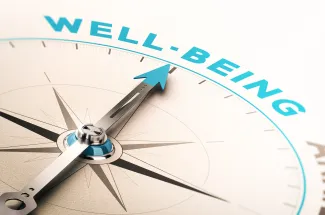
“I think that when it comes to mental health counseling for Latinos, it’s definitely lacking no matter whether you’re in Central Point or Medford, which are bigger towns,” Corona said.
When Corona worked as a drug and alcohol counselor, she said she was one of just a handful of bilingual counselors in Jackson County – which includes Talent and Phoenix – and neighboring Josephine County. She had clients come from Roseburg, 100 miles away, seeking her bilingual services.
Trauma manifests itself differently in every person through experiences like sleep loss, chronic worry, and grief, Rogers said. “People can do okay for a little bit and then they can be triggered by something that goes into their brain and reminds them of this scary experience that they had.”
Stress, anxiety, and sleeplessness can manifest in declining physical health. “It degrades our immune response. We end up with more inflammation. We end up with more pain. We end up with more cardiovascular problems, high blood pressure,” Rogers said.
And for those not directly affected by wildfires, seeing infernos on the news and smelling smoke hundreds of miles away can serve as reminders that the climate is changing. Rogers said that can lead to senses of hopelessness and anger that corporations continue to pollute the atmosphere despite decades of warnings and mounting impacts.
One of the consequences of atmospheric pollution has been stark increases in the number of days each year when fire weather occurs across the U.S. and the world. Fire weather is marked by windy, hot, and dry conditions.
The region torched by the Almeda Fire sees three to six more days on average every year during the past decade when fire weather conditions are present, compared with four decades prior, analysis shows.
“We can have anxiety and fear and worry about any of those injustices that we’re seeing, or any of those losses that we’re seeing,” Rogers said.
Walker, the clean air educator with Clean Air Methow, said it can be helpful to remember that “smoke season doesn’t last forever” during smoky days.
“I think that living with wildfire smoke can become this really lovely reinforcement of mindfulness,” Walker said. “This is what it is right now, whether it’s good or bad, it’s going to change.”
Claire Carlson, John Upton and Kaitlyn Trudeau wrote this article for The Daily Yonder.



